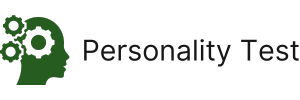The Myers-Briggs Personality Test: Bridging Jungian Psychology

Take Hogan Personality Inventory Online
Test YourselfThe Myers-Briggs Type Indicator (MBTI) stands as one of the most widely recognized and utilized personality assessment tools worldwide, transforming complex psychological theories into accessible insights for personal and professional development. Many people seek to take a free Myers-Briggs personality test to gain these valuable insights about themselves. This remarkable instrument bridges Carl Jung's psychological typology with practical applications, offering individuals a framework to better understand themselves and others through a systematic categorization of personality preferences.
Historical Development and Creation
The MBTI has its roots in the pioneering work of Katharine Cook Briggs and her daughter Isabel Briggs Myers, two remarkable women who developed this instrument during a time when women's intellectual contributions were often undervalued. You can now find the comprehensive Myers-Briggs personality test for free on various educational platforms. Katharine Briggs was an educated woman who earned a college degree, worked as a teacher, wrote novels, and studied human behavior during an era when women were not encouraged to develop their intellectual pursuits. Her daughter Isabel Myers inherited this intellectual curiosity and together they embarked on a journey that would transform our understanding of personality.
The foundation for their work began in the 1940s, with the original assessment developed in 1943. Taking a personality test Myers-Briggs style helps people understand their psychological preferences in how they perceive the world and make decisions. What makes their achievement particularly remarkable is that neither woman had formal training in psychology, statistics, or psychometrics. Despite this lack of conventional credentials, they were driven by intellectual curiosity and a desire to create a practical application of personality theory.
Their work culminated in the official publication of the Myers-Briggs Type Indicator in 1975, which quickly became an essential tool for vocational planning, education, marriage counseling, and personal relationship development. Today, you can access a Myers-Briggs personality test for free online through numerous websites dedicated to personality psychology. In that same year, the company now known as The Myers-Briggs Company became the exclusive publisher of the MBTI assessment, continuing to revise and update it to enhance its validity, reliability, and global applicability.
Theoretical Foundation: Carl Jung's Psychological Types
The MBTI firmly builds upon the theoretical foundation established by Swiss psychiatrist Carl Jung in his work on psychological types. For those interested in Jung's theories, a free printable Myers-Briggs test can provide practical insight into his complex ideas. Jung's theory had a significant impact on the field of psychology, particularly in areas such as counseling and personality assessment. The mother-daughter team recognized the practical potential in Jung's complex theoretical framework.
What Briggs and Myers accomplished was translating Jung's abstract concepts into an accessible format that could be practically applied. Many people now turn to a free Myers-Briggs test to explore these concepts in relation to their own personality. They developed a structured language and framework for discussing and appreciating the diversity among individuals, supporting different types of communication and enhancing self-awareness. This innovation was revolutionary, as it was one of the first assessment tools to provide a systematic approach to understanding personality differences.
The Four Dimensions of Personality
The cornerstone of the MBTI is its four key personality dimensions, each representing a dichotomy or spectrum of preferences that shape how individuals interact with the world. The Myers-Briggs personality type test for free resources available today help people identify where they fall on each of these dimensions. These dimensions provide the framework for categorizing people into 16 distinct personality types.
- Extraversion (E) vs. Introversion (I)
This dimension focuses on an individual's energy orientation and where they direct their attention. Taking a free Myers-Briggs personality test online can help determine whether you're more extroverted or introverted in your approach to the world. Extraverts derive energy from external interactions, enjoying social engagement and outward activity. They tend to be energized by being around others and often think out loud. Introverts, conversely, gain energy through solitary activities and internal reflection. They prefer deeper one-on-one conversations and need time alone to recharge after social interactions. - Sensing (S) vs. Intuition (N)
The second dimension addresses how individuals gather and process information. Many educational institutions offer a free printable Myers-Briggs assessment to help students understand their learning preferences. Those with a sensing preference focus on concrete, tangible information they can directly perceive through their five senses. They value facts, details, and practical applications. In contrast, intuitive types are drawn to abstract thinking, identifying patterns, possibilities, and meanings beyond the immediate data. They often focus on the big picture and future implications. - Thinking (T) vs. Feeling (F)
This dimension examines how individuals make decisions. A personality test Myers-Briggs for free can reveal whether you tend to prioritize logical analysis or personal values when making choices. Thinking types apply logical analysis to decision-making, emphasizing objectivity, fairness, and consistent principles. They tend to step back from situations to analyze them impartially. Feeling types make decisions based on values, empathy, and consideration of how choices affect people. They prioritize harmony and consider the human impact of decisions. - Judging (J) vs. Perceiving (P)
The final dimension reflects one's lifestyle approach and orientation to the external world. Many counselors recommend taking a free printable Myers-Briggs personality test to better understand your approach to organization and planning. Judging types prefer structure, organization, and planning. They like to have things settled and decided, working systematically toward goals. Perceiving types value flexibility, spontaneity, and keeping options open. They adapt readily to changing circumstances and often enjoy last-minute inspirations.
Applications in Organizations and Education
The MBTI has found widespread application in organizational and educational settings, where understanding individual differences can significantly enhance collaboration and communication. The printable Myers-Briggs assessment materials are commonly used in team-building workshops and leadership development programs. In corporate environments, the MBTI is frequently used to improve team dynamics, enhance leadership development, and optimize workplace communication. The Myers-Briggs Company provides these "people development solutions" to organizations worldwide, helping to influence company culture, teamwork approaches, management development strategies, and ultimately employee satisfaction.
Educational institutions similarly benefit from the MBTI framework. Understanding your Myers-Briggs free personality profile can help students select courses and study methods that align with their natural preferences. It helps students gain self-awareness about their learning preferences and can guide educators in developing more effective teaching approaches that accommodate diverse learning styles. The assessment provides a common language for discussing differences in a non-judgmental way, fostering greater understanding and cooperation in learning environments.
Benefits for Self-Awareness and Personal Growth
Beyond organizational applications, the MBTI serves as a powerful tool for individual self-discovery and personal development. The Myers-Briggs personality types test results often provide illuminating insights into patterns of behavior that might otherwise go unnoticed. The process of identifying and understanding one's personality type often leads to greater self-acceptance and appreciation of one's natural tendencies and preferences.
As individuals engage with the MBTI framework, they gain insights into their strengths, challenges, and patterns of behavior. Using a free Myers-Briggs test online can be the first step toward deeper self-understanding and personal growth. This heightened self-awareness can lead to more intentional decision-making and improved life satisfaction. Understanding one's preferences around energy, information-gathering, decision-making, and lifestyle can help individuals make choices that align with their natural inclinations rather than working against them.
The MBTI also enhances understanding of others, improving interpersonal relationships by fostering appreciation for different perspectives and communication styles. This is particularly valuable in coaching relationships, where the MBTI serves as a primary means for deepening client self-awareness and helping clients become their own experts in finding solutions to achieve their goals.
The 16 Personality Types
The combination of preferences across the four dimensions results in 16 distinct personality types, each denoted by a four-letter code. For example, an individual might be classified as INTJ (Introverted, Intuitive, Thinking, Judging) or ESFP (Extraverted, Sensing, Feeling, Perceiving). Each type represents a unique pattern of preferences and tendencies.
These 16 types provide a comprehensive framework for understanding personality differences. While the types are distinct, they exist on continua rather than as rigid categories, recognizing that individuals may express preferences to different degrees and may develop complementary functions throughout their lives.
The MBTI recognizes that no type is inherently better than another. Each has distinct strengths and potential blind spots, and understanding these can help individuals leverage their natural abilities while developing areas that may not come as naturally.
Conclusion: Enduring Impact and Relevance
Since its development, the Myers-Briggs Type Indicator has maintained remarkable relevance and popularity across multiple domains. Its enduring appeal lies in its accessibility, practical applications, and ability to translate complex psychological concepts into everyday language.
The work of Katharine Briggs and Isabel Myers continues to influence how we understand human personality and interaction. Their contribution is particularly notable given the constraints they faced as women pursuing intellectual work in an era that often discouraged such endeavors. Despite lacking formal credentials in psychology, their determination and insight produced an assessment tool that has transformed our approach to personality differences.
Today, the Myers-Briggs framework serves as both a practical tool for organizations seeking to improve workplace dynamics and a personal resource for individuals embarking on journeys of self-discovery. It offers a structured yet flexible approach to understanding the diverse ways humans perceive, decide, and interact with the world around them.
The MBTI reminds us that personality differences are not obstacles to overcome but resources to appreciate and leverage. In a world that increasingly values both collaboration and individuality, the contributions of Briggs and Myers continue to offer valuable guidance for navigating the complexities of human personality and relationships.
